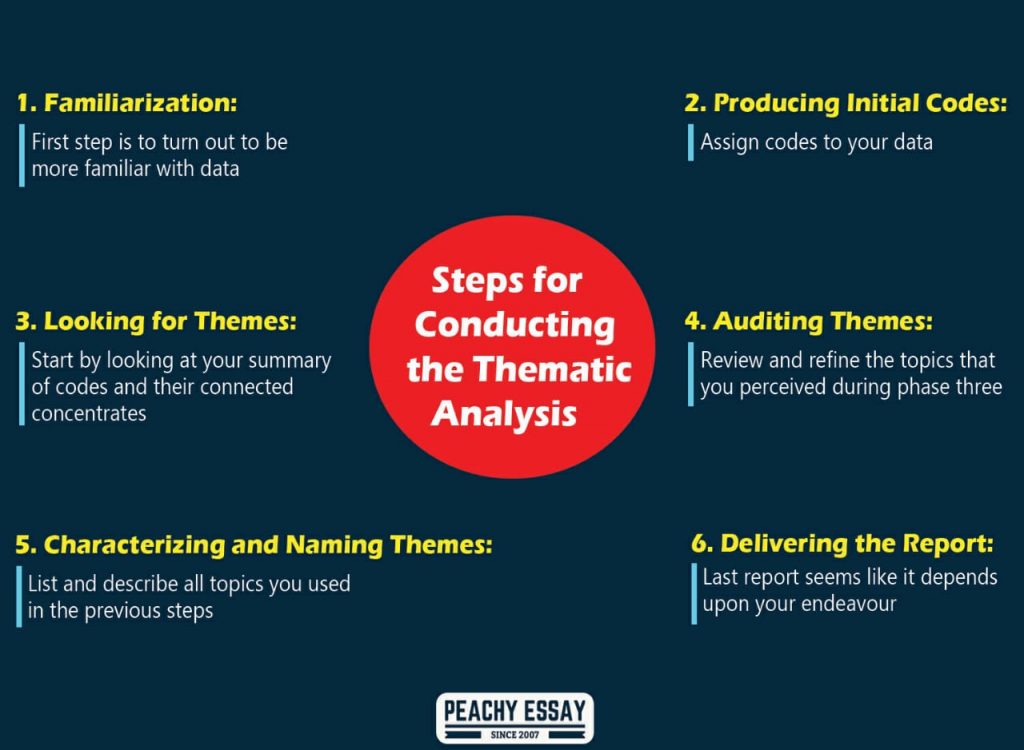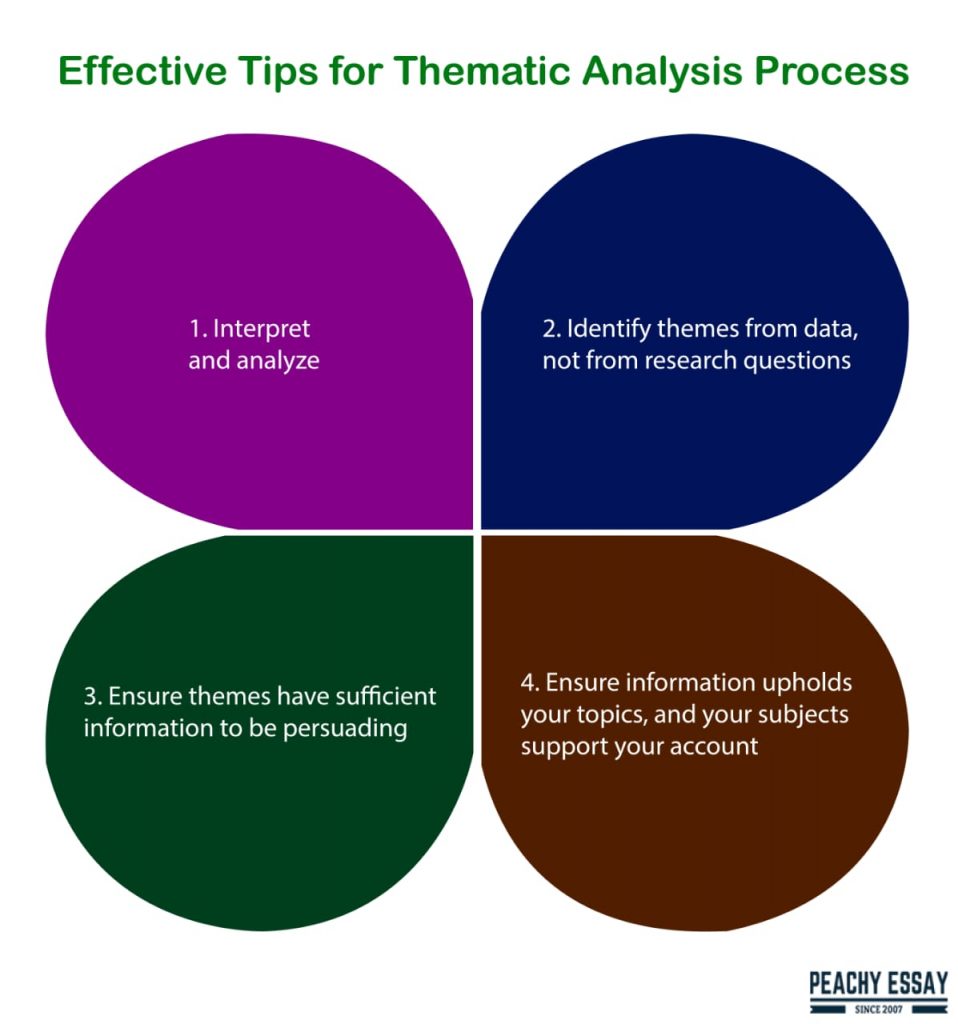When you have gathered subjective information, the next stage is to analyse what participants have told you. Contingent upon the intricacy of your undertaking, this can be a straightforward or a perplexing assignment. In any case, regardless of what your undertaking is, you should follow certain rules for breaking down your meetings.
Even though you may feel like you have a brilliant thought of what participants have given you and are anxious to begin carrying out your experiences, doing an appropriate investigation is significant for your outcomes’ legitimacy.
A legitimate examination will guarantee that you go through your information systematically and completely. The investigation likewise makes it simple for others to see precisely how you arrived at your different decisions about your members and make your outcomes considerably more reliable.
If you have gathered qualitative data and don’t have a clue on what to do to make sense out of it, don’t stress; you will get in-depth information on how to use thematic analysis to solve your problem.
What is a Thematic Analysis?
Thematic analysis is a research approach used to analyse qualitative data. Under this method, the investigator keenly assesses the information to discover themes and codes.
This approach was initially discovered by researchers – Virginia Braun and Victoria Clarke. In any case, thematic analysis can be adopted in many disciplines.
When to Use Thematic Analysis
Thematic analysis is a nice method to manage research where you’re endeavouring to find something about people’s viewpoints, notions, data, experiences, or characteristics from a lot of abstract data – for example, interviews, electronic media profiles, or study responses.
Here is a research question you might use thematic analysis to answer:
How do patients see specialists in an emergency clinic setting?
Steps in Thematic Analysis
Here are the steps for conducting the thematic analysis.

Familiarization
The first step is to turn out to be more familiar with data. It’s crucial to get an intensive framework of all the data you assembled prior to inspecting particular things.
In the principal phase, you start to adjust yourself with your data. If you have sound annals, it’s regularly imperative to play out some record, which will allow you to work with your data. Under this phase, you go through the aggregate of your data from your entire gathering and start taking notes, and this is where you start checking preliminary ideas for codes that can depict your substance. This stage is connected to getting more familiar with your data.
Producing Initial Codes
Under phase two, you are supposed to assign codes to your data. A code is a brief description of the meeting’s deliberation. Each time, you ought to record all the interesting things. A code is a portrayal, not a translation. It’s a method to begin coordinating your data into critical groups.
For instance, we should attempt to code a snippet from a meeting about video web-based:
“I: So how could you discover something?
James: Well, first, my significant other took a gander at HBO and proposed that we watch ‘Silicon Valley,’ however; I’m not actually into parody shows. Thus, at that point, she went to Netflix and recommended various motion pictures. In any case, there wasn’t actually whatever I felt like… yet then I recollected that we had been watching ‘Better call Saul’ before the late spring occasion. I couldn’t actually recollect whether we had observed every one of the scenes, so we found it, and it worked out that we had halted in the season; along these lines, that is the thing that we watched… ”
You can give this segment different codes relying upon your inclinations. On the off chance that you are keen on various real-time features, you could utilize the codes “Netflix” and “HBO.”
There is particular coding software; however, coding can be done by taking notes or using a word archive table. Whenever all the information has been coded, next is to gather every one of the segments that fit into each code—e.g., group all areas in your meetings with the code “Netflix.” If you are utilizing pen and paper, you should duplicate segments with different codes to put them in more than one code classification.
Looking for themes
As codes recognize fascinating information with respect to your data, topics are broader and incorporate a unique comprehension of the codes and the data. You start by looking at your summary of codes and their connected concentrates and subsequently endeavour to analyze the codes into more broad subjects that say something captivating about your data. For example, you could merge the codes “Netflix” and “HBO” into a lone subject called “web-based features.” Searching for topics is an iterative connection where you move codes forward and backwards to outline different themes. Creating a guide of your codes and subjects or having codes on tacky notes that you can move around can help you imagine the association between different codes and themes and the level of the points. A couple of subjects might be subthemes to others. In this collaboration, not all codes will fit alongside various codes. A couple of codes can become themes themselves on the off chance that they are charming, while various codes may have all the earmarks of being tedious, and you can place them in a permanent blended topic. Presently, you shouldn’t dispose of codes that don’t seem to fit wherever; as they may be have interest later.
Auditing Themes
In phase four, you review and refine the topics that you perceived during phase three. You peruse all of the concentrates related to the codes to explore in case they support the theme, if there are intelligent irregularities, and check what the points cover. On the off chance that there are various legitimate irregularities inside a point or it ends up being unreasonably extensive, you should think about separating the subject into discrete subjects or moving a bit of the code into a current theme they fit better.
You continue to do this until you feel that you have many themes that are lucid and distinctive; at that point, you go through a similar interaction again about your whole informational index. You read through the entirety of your information again and consider if your topics satisfactorily address the intriguing subjects regarding your meeting and uncoded information that ought to be coded because it finds a way into your topic. In this interaction, you may likewise find new subjects that you have missed. Stage 4 is an iterative interaction, where you go to and fro between subjects, codes and concentrates until you feel that you have coded all the important information. You have the correct number of cognizant themes to address your information precisely. In this iterative cycle, you may feel that you can continue to consummate your subjects perpetually, so stop when you presently don’t add anything of importance to the examination.
Characterizing and naming themes
In phase five, you are supposed to list and describe all topics you used in the previous steps. Ensure that the names are interesting. In the subject description, you don’t merely describe the issue here, but show what is interesting. As you depict the subject, you distinguish which story the topic recounts and how it identifies with different subjects and your general examination question. Now in the investigation, you should get yourself ready to recount a sound anecdote about the subject, maybe with some subthemes. It ought to be feasible for you to characterize what your topic is unmistakable. Besides, if you see that the topic is excessively different or complex for you to recount a reasonable story, you may have to return to stage 4 and revise your subjects.
Delivering the report
The last report seems like it depends upon your endeavour; you may require your last movement to be personas or customer circumstances; nonetheless, there are a couple of shared characteristics you should consolidate reliably. Exactly when you audit your results, there should reliably be adequate information about your venture and cycle for the reader to survey your investigation quality
You, as of now, have a portrayal of your subjects, and you can use this as a justification for your last report. At the point when you present your subjects, use proclamations of what the individuals said to show your revelations. Video, sound, and photo models are fundamentally convincing; in any case, NEVER use this without the part’s consent. Keep in mind; you have been conversing with these members. As far as you might be concerned, the members are genuine people, every one of whom has a bunch of perspectives and a large group of rights you should regard. It would help if you caused the members to feel real to the individuals you report your discoveries too.
What is Coding in the Thematic Analysis?
It is the way of naming and orchestrating your data to recognize various themes and interface them.
As you code customer input, ensure that names and expressions are assigned names that address huge themes in each response. These names can be words, articulations, or numbers; we recommend using words or short articulations since they’re less complex to review, skim, and set up.
Coding emotional assessment to find normal points and thoughts is fundamental for topical investigation, which is significant for abstract data assessment. Effective assessment isolates subjects from the substance by researching the word and sentence structure.
Why is it Important to Code Qualitative Data?
Coding emotional data simplifies it to translate customer feedback. Consigning codes to words and articulations in interview assists get what the issue is here, which causes you better take apart and sum up research findings.
Experts use coding and other emotional data examination cycles to assist them with making data-driven decisions subject to customer analysis. When you utilise codes to look at your client’s analysis, you can gauge the customer’s language’s typical subjects.
Automatic versus manual coding of subjective information
Techniques for coding abstract data fall into two groupings: programmed coding and manual coding.
You can mechanize the coding of your emotional data with topical examination programming. Topical investigation and subjective data programming use AI, man-made reasoning, and common language preparing (NLP) to code your abstract data and split the substance into themes.
Topical examination programming is independent, which implies that;
You don’t have to set up topics or classes ahead of time.
You don’t have to prepare the calculation — it learns all alone.
You can, without much of a stretch, identify themes you may not have spotted on your own.
What is Thematic Coding?
Thematic coding is such an abstract data examination that finds subjects in the content by separating the significance of words and sentence structure.
At the point when you use topical coding to separate customer input, you can understand which subjects are for the most part normal in criticism. This urges you to appreciate what drives customer dependability in a definite, critical way.
How to Manually Code Qualitative Data
Here are the steps for coding qualitative data:
- Pick whether you’ll use deductive or inductive coding.
- Peruse your data to get a sensation of how it is. Assign your first plan of codes.
- Examine your data to code whatever amount as could sensibly be considered typical. Your codes should end up being more ordered at this progression. Arrange your codes and sort out how they fit into your coding diagram.
- Recognize which topics come up the most — and follow up on them.
What is Deductive Coding?
It refers to starting with a predefined set of codes; by then, consign those codes to the new emotional data. The codes’ origin could be past assessment, or you may comprehend what points you’re enthused about analyzing. Deductive coding is furthermore called thought-driven coding.
For example, assume you’re investigating customer experience. You need to fathom the issues that arise out of long call stand-by times, so you choose to make “stand by the time” one of your codes before you start investigating the data.
With deductive coding, you can save time and ensure that your locales of interest are coded. Nevertheless, it very well may be ideal in the event that you similarly were careful about tendency; when you start with predefined codes, you have an inclination in regards to the fitting reactions. Guarantee you don’t miss other critical points by emphasising your hypothesis.
What is Inductive Coding?
Inductive coding, likewise called open coding, begins without any preparation and makes codes dependent on the subjective information itself. You don’t have a set codebook; all codes emerge straightforwardly from the overview reactions.
Tips for Thematic Analysis
Here are the tips for thematic analysis.

Interpret and analyze
It is easy to summarize and paraphrase your information, but what is needed here are interpretation and analysis.
Identify themes from data, not from research questions
Try not to fall into the snare of organizing your information as per research questions. This will prompt your subjects, simply being a portrayal of your exploration questions. Ensure you’re effectively discovering examples and importance from your information.
Ensure themes have sufficient information to be persuading.
Assess whether a theme has sufficient information to back it up. There is certifiably not a particular principle or number of extracts to demonstrate a topic’s presence; however, ensure that you can put forth a persuading defence to show that this is a common example.
Ensure information upholds your topics, and your subjects support your account.
Ensure that your topics are precisely addressed in the information and that your subjects back your narrative. Double-check the associations between each progression in your examination and guarantee that you weren’t taking an excessive number of leaps between each progression.
Final Thoughts
Thematic analysis is an adaptable way to deal with subjective investigation that empowers researchers to create new bits of knowledge and ideas from the information. Beginner analysts who are simply figuring out how to examine subjective information will discover thematic analysis as an open methodology.
Since thematic analysis is a particularly adaptable methodology, it implies various approaches to decipher importance from the informational index. It can feel threatening to decipher what information is or isn’t imperative to underscore. Moreover, since topical investigation centres on searching for designs across interviews, phenomena that happen in just a single individual record can be neglected.




